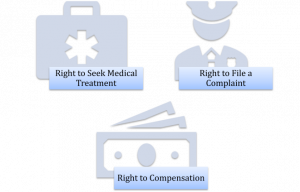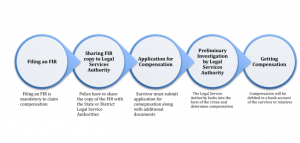[Trigger Warning: The following content contains information on physical violence which some readers may find disturbing.]
An acid attack is the crime of hurting a person by throwing acid on them, administering acid(( Compensation Scheme for Women Victims/Survivors of Sexual Assault/other Crimes 2018, National Legal Services Authority, accessed at https://wcd.nic.in/sites/default/files/Final%20VC%20Sheme_0.pdf.)) to that person or doing anything with acid with the intention or knowledge that it would harm the person. An acid attack may result in injuries to a person, in any part of the body, including(( The Scheme for Relief and Rehabilitation of Offences (by Acids) on Women and Children, 2009 National Commission for Women, accessed at http://ncwapps.nic.in/PDFFiles/Scheme_ACID_Attack.pdf.)):
- Permanent or partial damage or deformity to a person
- Burns on any body parts
- Maiming, dis-figuration or any form of disability of a person.
Even though the main definition of acid attack is given in the Indian Penal Code, 1860, the Law Commission of India has also defined an acid attack, as a form of violence against women where the perpetrator splashes a person or object with acid in order to deface or kill them.(( Proposal for the Inclusion of Acid Attacks as Specific Offences in the Indian Penal Code and a Law for Compensation for Victims of Crime, Law Commission of India No 226, 2008, accessed at https://lawcommissionofindia.nic.in/reports/report226.pdf.))
An acid attack can happen anywhere. Incidents of acid attack have frequently taken place at home, on the streets and even at work places.


